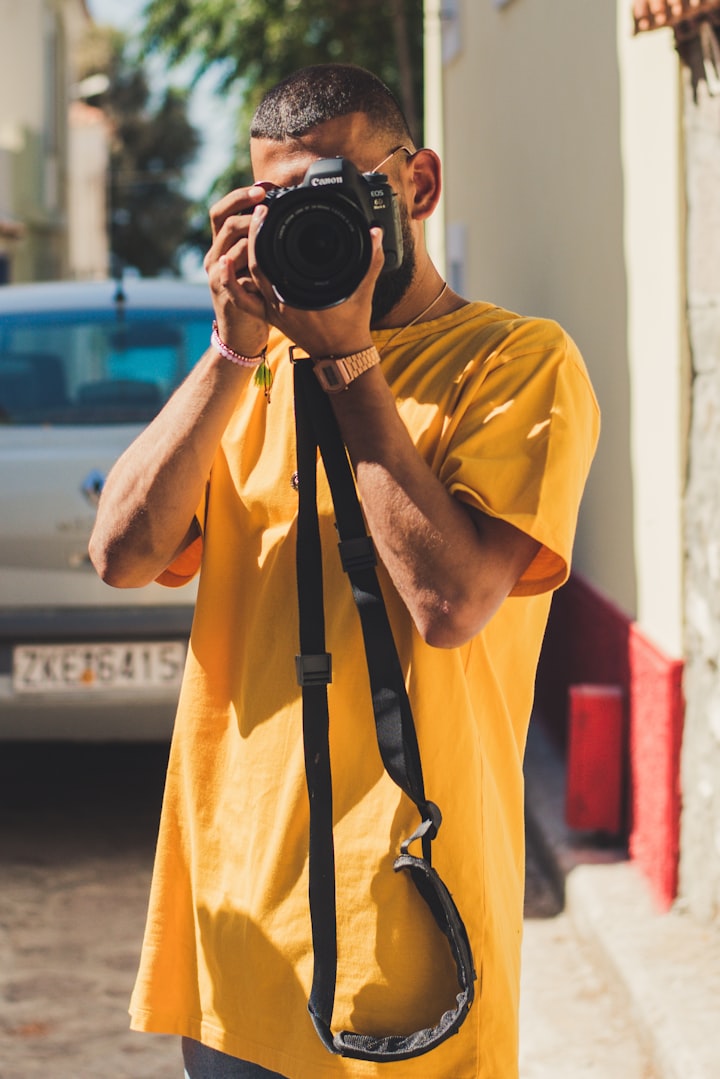Taking the Perfect Picture
(Even If You Aren't a Pro)

Have you ever snapped a picture, thought to yourself Yeah this is going to be a great one! and then when you pull it up on your computer at home, or look at it on your phone later it seems not quite so great? Never fear, you're not alone! Even the best of photographers take hundreds more photographs than they actually use. The copies help to provide for composites or just to choose the best one later on down the line. For every one picture that turns out "just right" there are most likely ten more sitting in a discard bin! So how do you snap that perfect picture of your pet, travel destination or loved ones? Here's a few tips to help:
1. Take Lots of the Same Picture
Did I mention the discard bin? Yep, you will definitely be needing one too! Having a singular copy of the photo you want leaves a much larger margin for error than having numerous copies. Multiple copies of the same picture allow you to pick the best copy during post-production or create a composite of similar copies to remove irregularities if you have some Photoshop knowledge. Sometimes it could be something as simple as someone blinked in one copy of a photo (It happens more often than you would think!) and has their eyes wide open and are smiling happily in another copy. Or perhaps you are trying to get the perfect shot of a building and people keep walking in front of you. If you just keep snapping diligently, you can either get enough for a composite, or you will eventually get one sans people.
2. Have Good Lighting
Lighting can be your best friend, or your worst enemy. If your subject is in the dark, you will end up with a blob or blur for a picture, and no one wants that. If there is too much, or too harsh, light it can wash your subject out and worst-case scenario you end up with a nearly white photo with little to no depth. The takeaway? You don't want to little or too much light! There are plenty of ways to avoid these worst-case scenarios of course! Make sure your camera's exposure (ISO) is set to handle the lighting you are putting it in. Your ISO settings determine exactly how much light your camera allows in. The brighter it is in your particular environment, the lower you want your ISO. Some cameras (and smartphones) also come with a night mode to assist with those tricky nighttime or low light shots. If you are shooting in a controlled environment (i.e. your home or a studio) try using different light sources to diffuse the light around your subject and make it less harsh. You can use something as simple as a grocery bag to diffuse your camera flash. Or you can get fancy and buy a full flash and light setup.
3. The Rule of Thirds
If you have ever cropped a photo, you have most likely seen the grid used to guide your cropping endeavors. This grid is a perfect example of the rule of thirds. Generally, the grid is segmented into nine rectangles created by three vertical lines and three horizontal lines. Anytime you take a photo try to envision this grid over your subject matter. Always try to place your point of focus, or your subject matter, either in the center of the grid or on one of the grid lines. If you are shooting in landscape your subject matter should fall on one of the vertical grid lines or dead center. If you are shooting in portrait your subject matter should fall on one of the horizontal lines (usually the lower two) and be centered vertically.
4. Use Your Environment to Your Advantage
Most photographers are scared of the weather. Unless it is a beautiful, slightly cloudy day with perfect amounts of light, and absolutely no chance of rain, most photographers balk at venturing outside. In all reality there are very few days that could be considered "perfect". What these fair-weather photographers don't know is that they are missing beautiful opportunities. Overcast weather right before a storm creates deep, rich colors and the cloud formations make for some of the most breathtaking photos. After it rains you can find reflections and waterdrops to creating stunning effects. The weather can always be used to your advantage. Take mother nature by the reins and harness her power in your photos!
5. Keep It Simple
Don't over complicate things. Often times, the thing that feels most natural is what will look best. If a model is too posed, then the whole photo may feel fake. If the angle is too forced, then the whole photo will feel forced. Keep it light, keep it natural, and keep it simple. Unless you are photographing a crowd or want to showcase a cluttered space, an overcrowded photo can be just as off-putting as a forced one. If you do find yourself in a situation where you are photographing something crowded or clustered, distance is always better. The further away you are from the crowded subject matter, the more organized and intentional the photograph will seem. Focus on one element at a time when you can. Keep your focus on one subject and let the background fade away.
Photography is a passion. Many have it, few harness it. The more you learn, and the more you shoot, the more you will be able to harness that passion and get at least one perfect shot every time you venture out. Every time you take out your camera, whether it is a smartphone camera, digital, or DSLR, think of it as a learning opportunity. Consider each photograph you take a step toward your ultimate goal of the perfect shot. Process even the ones you don't quite like in post-production, because even the not quite right photos help you refine your editing skills. No matter what, take your passion with you wherever you go and never stop shooting!
About the Creator
Kathryn Paay
Reach into the depths of space and beyond. Could there be galaxies within each of us?






Comments
There are no comments for this story
Be the first to respond and start the conversation.